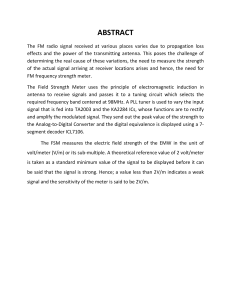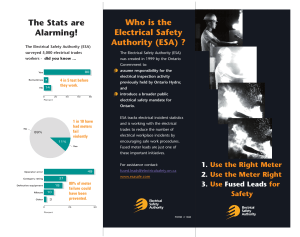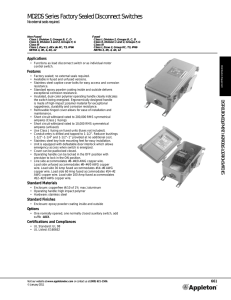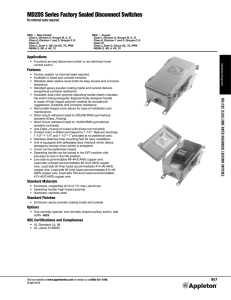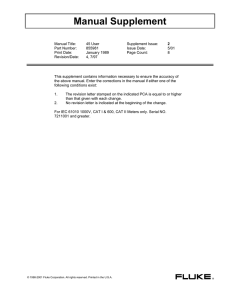Why Fused Test Leads - Duncan Instruments Canada Ltd.
advertisement
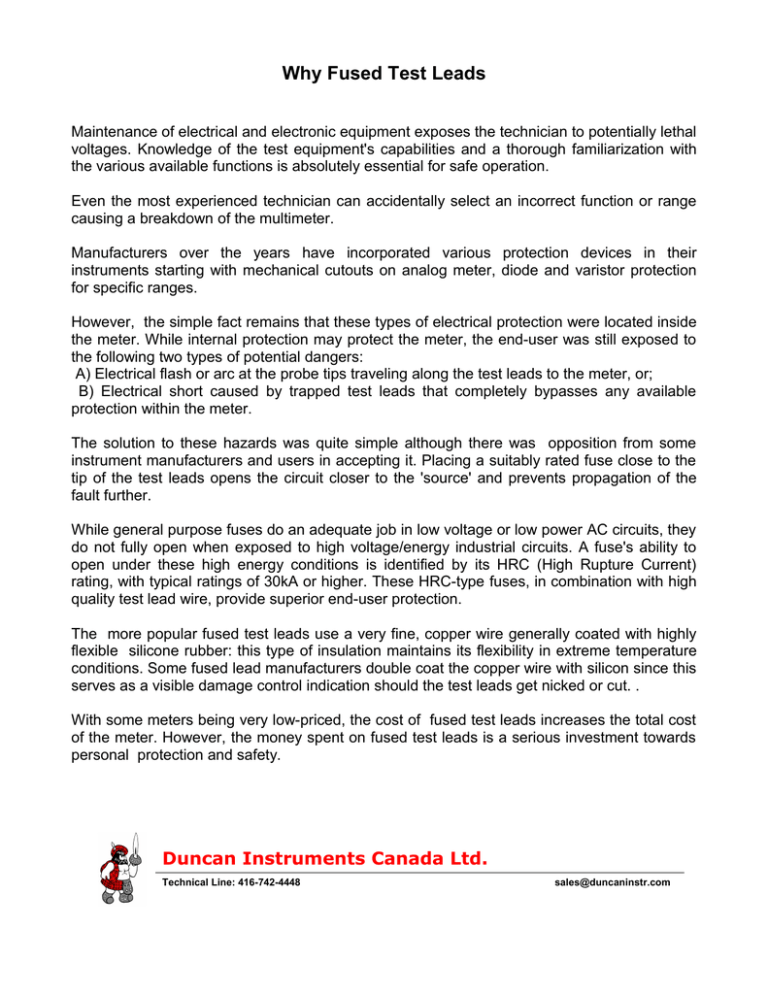
Why Fused Test Leads Maintenance of electrical and electronic equipment exposes the technician to potentially lethal voltages. Knowledge of the test equipment's capabilities and a thorough familiarization with the various available functions is absolutely essential for safe operation. Even the most experienced technician can accidentally select an incorrect function or range causing a breakdown of the multimeter. Manufacturers over the years have incorporated various protection devices in their instruments starting with mechanical cutouts on analog meter, diode and varistor protection for specific ranges. However, the simple fact remains that these types of electrical protection were located inside the meter. While internal protection may protect the meter, the end-user was still exposed to the following two types of potential dangers: A) Electrical flash or arc at the probe tips traveling along the test leads to the meter, or; B) Electrical short caused by trapped test leads that completely bypasses any available protection within the meter. The solution to these hazards was quite simple although there was opposition from some instrument manufacturers and users in accepting it. Placing a suitably rated fuse close to the tip of the test leads opens the circuit closer to the 'source' and prevents propagation of the fault further. While general purpose fuses do an adequate job in low voltage or low power AC circuits, they do not fully open when exposed to high voltage/energy industrial circuits. A fuse's ability to open under these high energy conditions is identified by its HRC (High Rupture Current) rating, with typical ratings of 30kA or higher. These HRC-type fuses, in combination with high quality test lead wire, provide superior end-user protection. The more popular fused test leads use a very fine, copper wire generally coated with highly flexible silicone rubber: this type of insulation maintains its flexibility in extreme temperature conditions. Some fused lead manufacturers double coat the copper wire with silicon since this serves as a visible damage control indication should the test leads get nicked or cut. . With some meters being very low-priced, the cost of fused test leads increases the total cost of the meter. However, the money spent on fused test leads is a serious investment towards personal protection and safety. Duncan Instruments Canada Ltd. Technical Line: 416-742-4448 sales@duncaninstr.com



